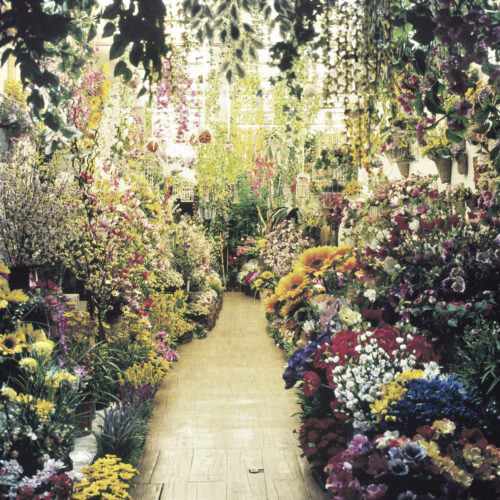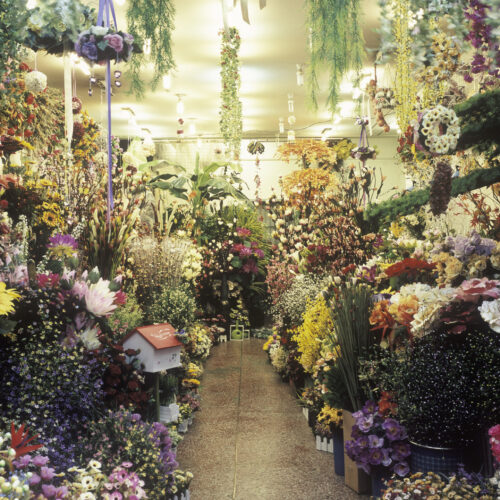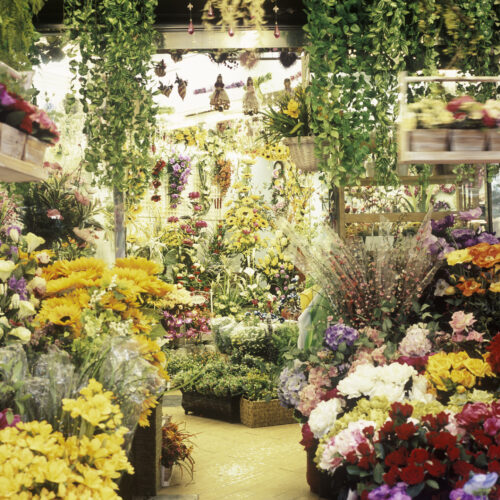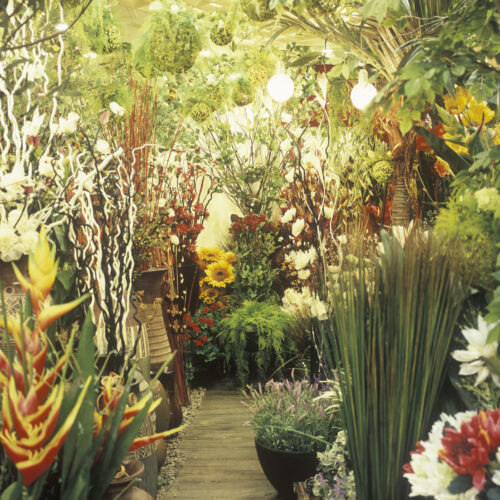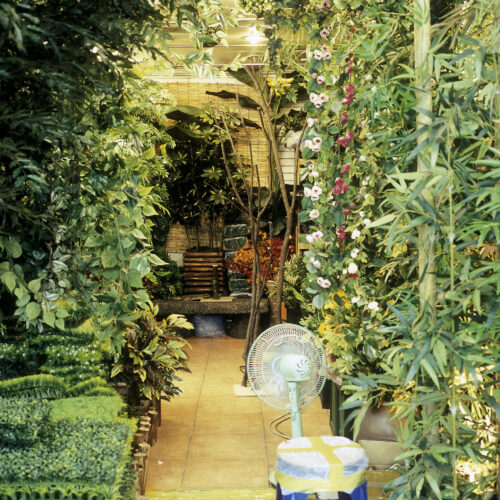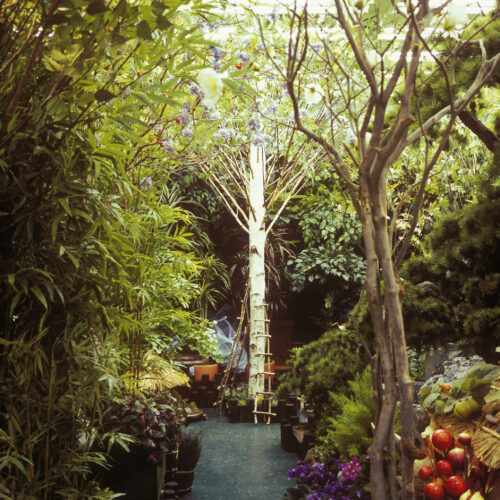PARAÍSOS ARTIFICIALES
El paraíso es un territorio cercado creado por el hombre. Es un lugar de perfección en la naturaleza, de reconciliación con nuestro origen, de serenidad hacia lo cercano. Los paraísos están ahí, nos esperan, nos los ganamos en unas ocasiones, nos expulsan de ellos en otras, para recriminarnos (a nosotros mismos) con su propia existencia. Sin embargo, los paraísos son espacios efímeros que se anclan en un lugar específico y permanecen como proyecciones de nuestro pensar, como una aparición latente en nuestra mente. Efectivamente, todo lo que pertenece a la naturaleza es efímero e ilimitado a la vez. Perdura hasta el infinito volviendo al punto de origen para volver a marchitarse y así una y otra vez. El paraíso se nos escapa, se escabulle entre nuestra imaginación de lo que es, desaparece, se desvanece. Pero todo lo que no podemos sujetar, todo lo que se escurre a nuestra ansia de posesión, puede ser reproducido, congelado, imitado como mucho, para no perderlo jamás. Lo contemplamos en cada uno de sus límites, lo estudiamos, escrutamos todas sus formas, línea a línea, cada uno de sus colores y matices para realizar una copia lo más cercana posible a su origen. De esta manera sujetamos lo efímero, detenemos su degradación, perpetuamos la belleza en un afán de negar su propia muerte.
El paraíso revierte a la lógica de la búsqueda. Tal vez el último viaje emprendido haya sido el de definir un paraíso a través de su imitación, del dominio técnico, desde la capacidad minuciosa de reproducir la realidad. Así se define el paraíso artificial perteneciente a un mundo en el que todo es reproducible e interminable, de modo que, por fin, parece perfectamente dócil y dominado. Creemos así en lo absolutamente inofensivo de este paraíso.
Paraísos Artificiales pretende ser un espacio propio y muy concreto en un lugar muy determinado. Las imágenes de esta serie han sido realizadas en las tres ciudades más importantes de Corea del Sur: Seúl, Busán y Daegu. La tradición de reproducción/imitación que existe en Asia forma parte de su cultura. La tenacidad para conseguir la perfección o la idea de perfección que se tiene de las cosas hace que el límite entre lo que es y su imitación perfecta se borre. En Asia los colores eléctricos de las plantas y flores artificiales salpican todos los rincones de su mundo cercado conviviendo al mismo tiempo con las reales. No hay rivalidad entre la naturaleza y su imitación, sino una coexistencia silenciosa y apaciguada. La naturaleza plastificada se diversifica en todas sus formas y para todos sus fines hasta convertir el aire en moléculas sintéticas.
ARTIFICIAL PARADISES
Paradise is an enclosure created by man. It is a place of perfection in Nature, of reconciliation with our origins, of calm acceptance of the familiar. Paradises are there, waiting for us. We earn them sometimes, and some other times we are expelled from them and then their very existence becomes a reproach (to ourselves). Nevertheless, paradises are ephemeral spaces anchored in a specific place: lasting projections of our thoughts, like a recurrent, latent vision in our minds. The truth is, everything that belongs to Nature is both fleeting and infinite. It lasts forever, again and again returning to its point of origin and renewing its process of decay. Paradise is elusive. While we are still imagining what it is, its slips away, fades, disappears. But everything we cannot hold onto, everything that escapes our yearning to possess, can be reproduced, frozen, at best imitated, so as never to lose it. We examine it from all angles, we study it, we scrutinise all its forms, line by line, all its colours and nuances, to create a copy as faithful as possible to the original. And in this way, in our determination to negate its demise, we preserve the ephemeral, we halt its decay and perpetuate its beauty.
Paradise reverts to the logic of the quest. Perhaps the last voyage evert to be undertaken is that of defining a paradise by imitating it, through sheer technical mastery and a meticulous ability to reproduce reality. That is how an artificial paradise is formed in a world where everything is so unending and reproducible that in the end it seems perfectly docile and under control. And that is why we believe such a paradise to be totally inoffensive.
Artificial Paradises aims to be a very specific, very personal space in very specific location. The photographs in the series were taken in South Korea’s three most important cities: Seoul, Busan and Daegu. The tradition of reproduction/imitation forms part of Asian culture. Determination to achieve perfection, or the very idea of perfection as perceived in things, blurs the dividing line between what exists and the perfect imitation of what exists. In Asia, the electric colours of artificial plants and flowers sprinkle every corner of their enclosed world, coexisting alongside real ones. There is no rivalry between Nature and imitated Nature, only silent, serene coexistence. Plasticised Nature diversifies in all its forms and for all its purposes until the air itself is turned into synthetic molecules.

